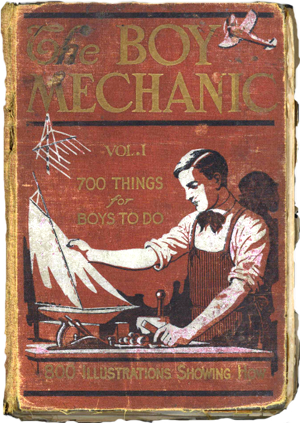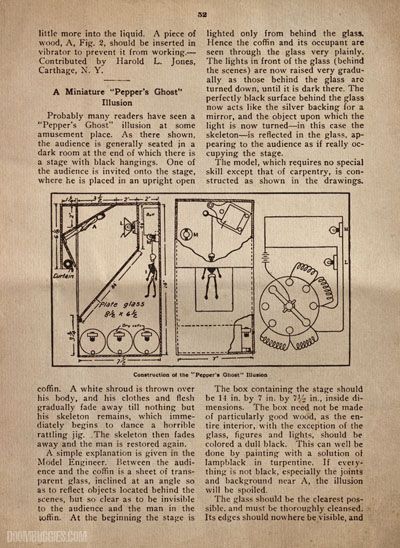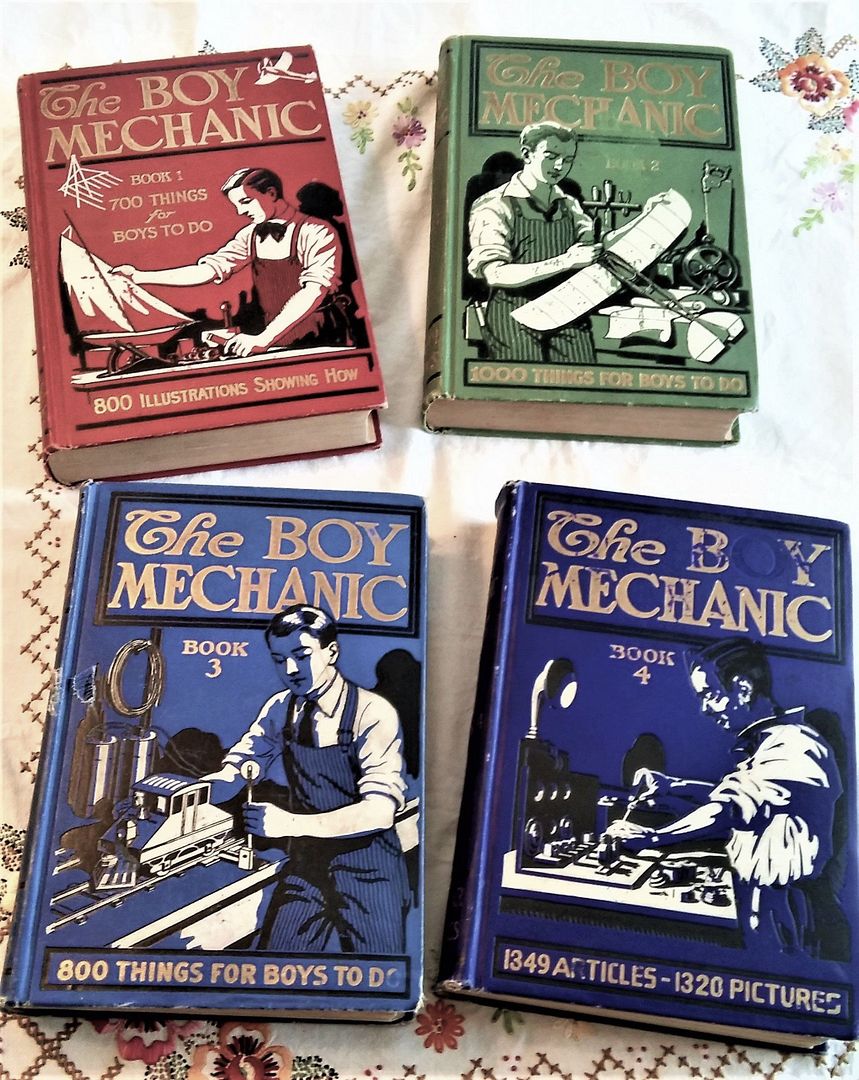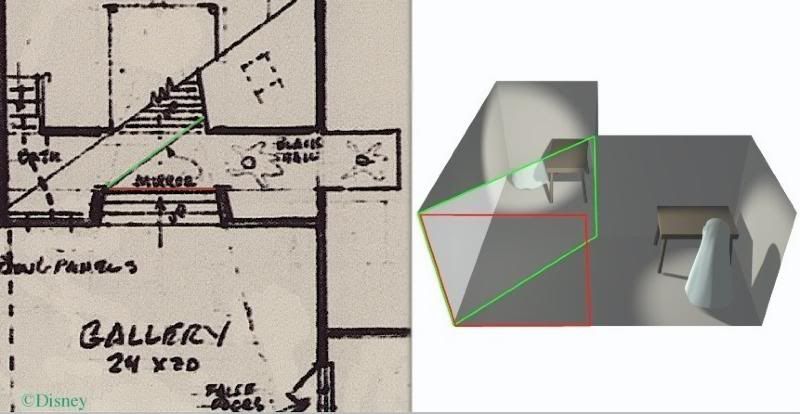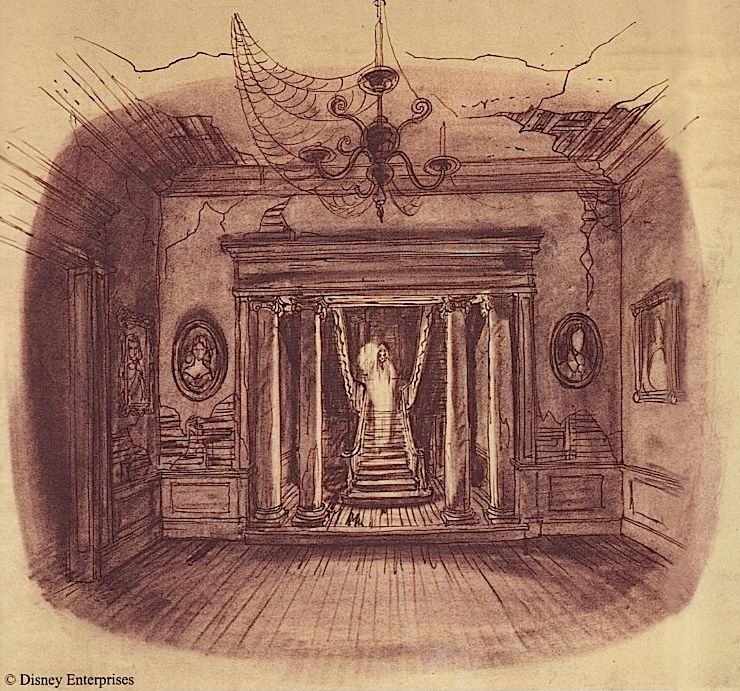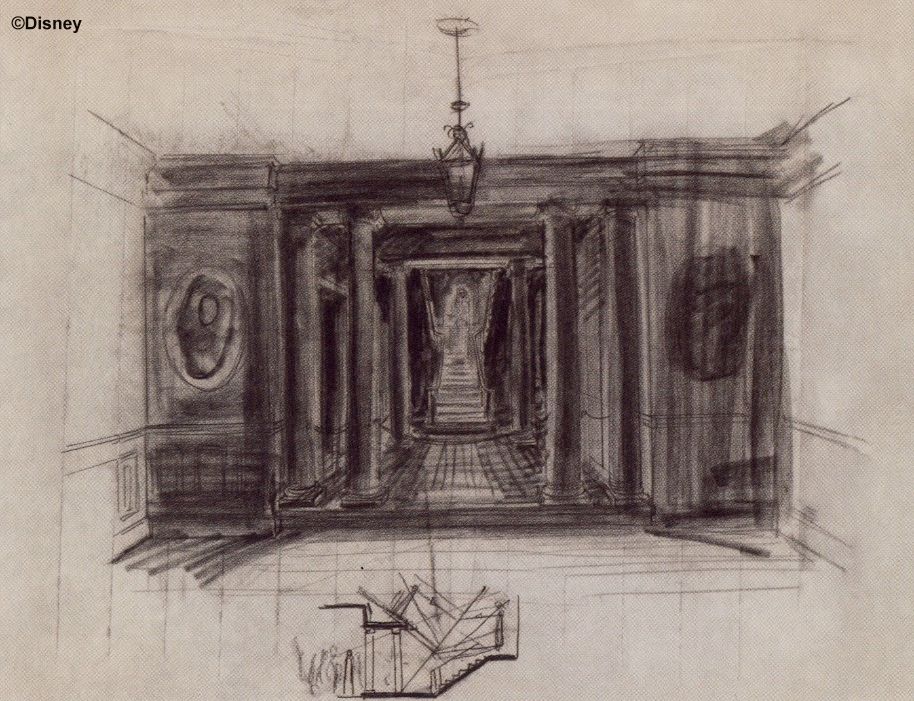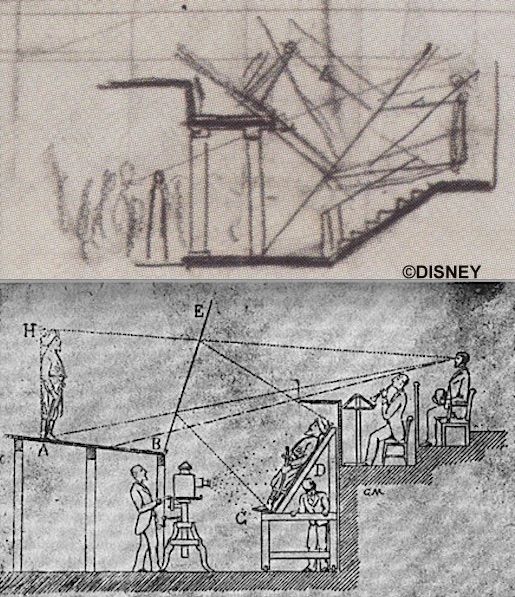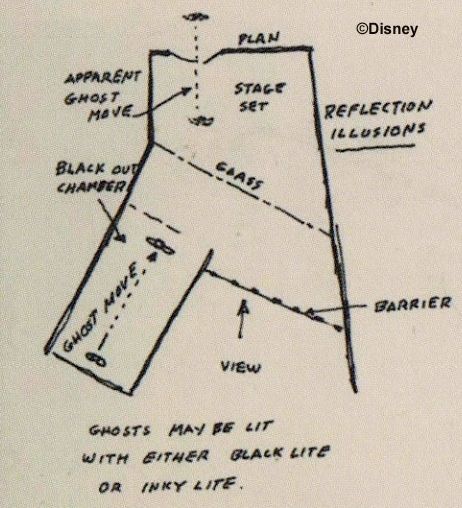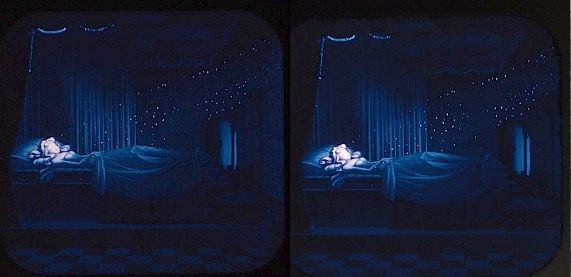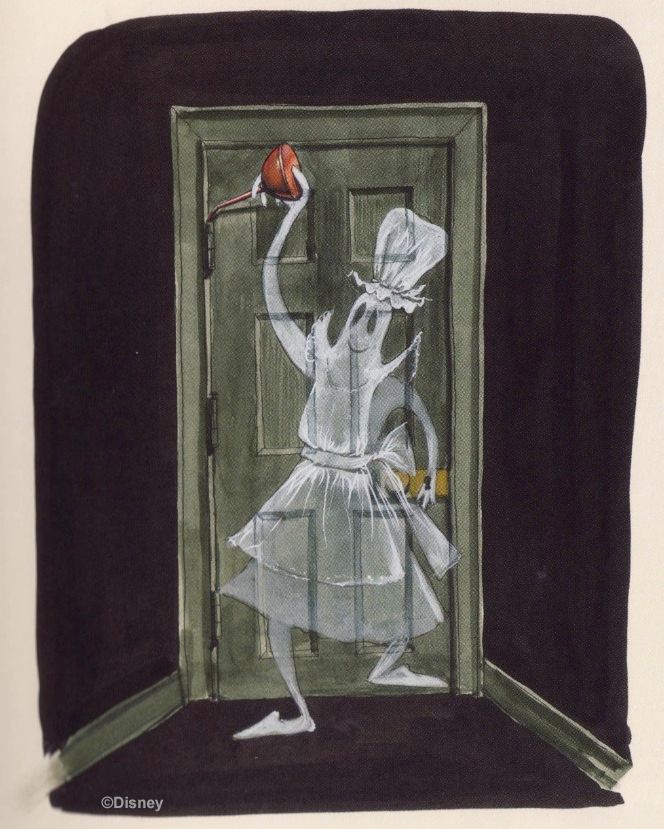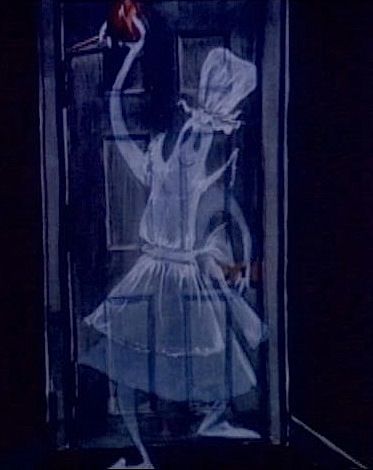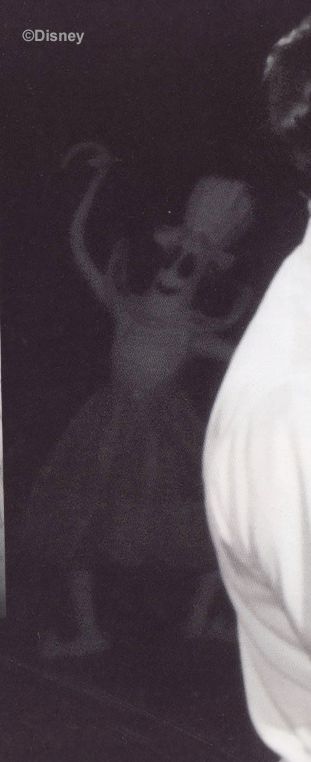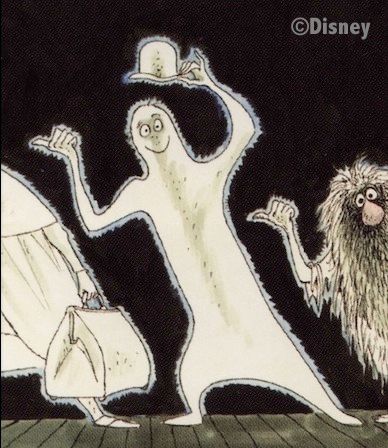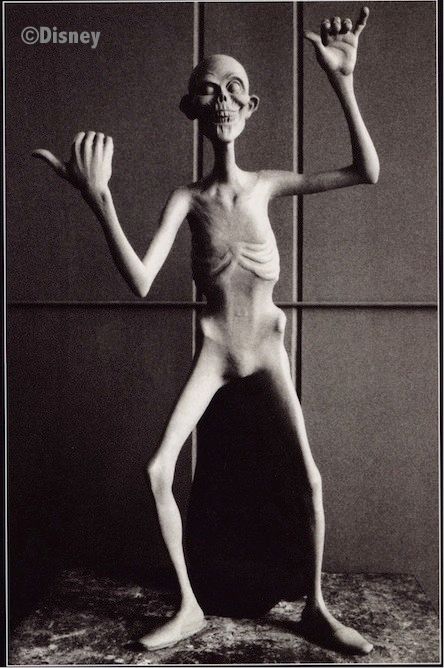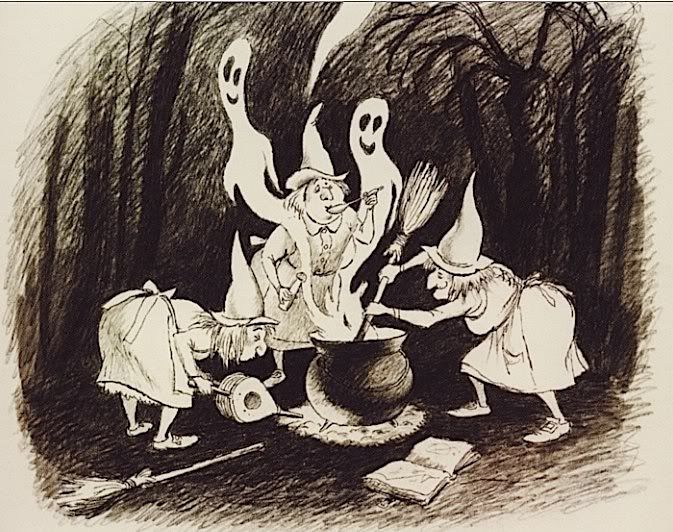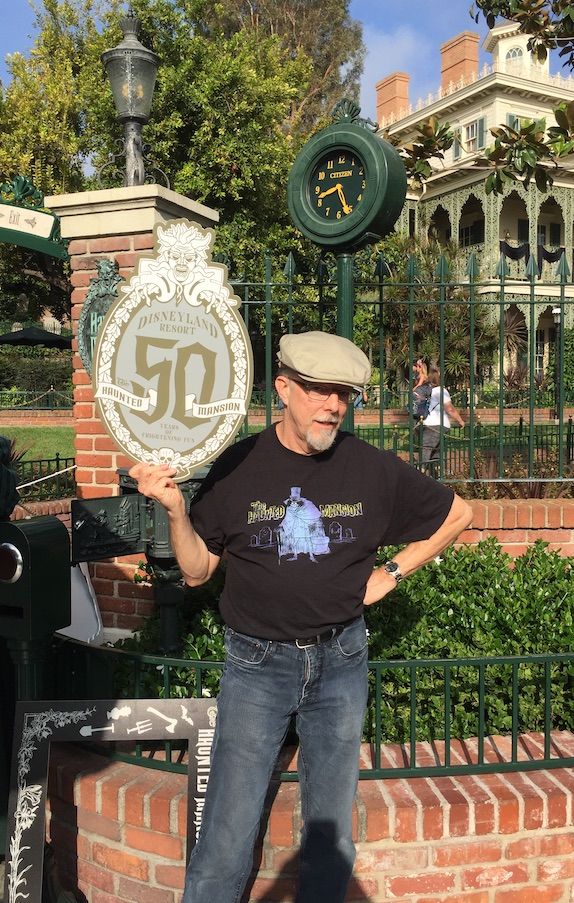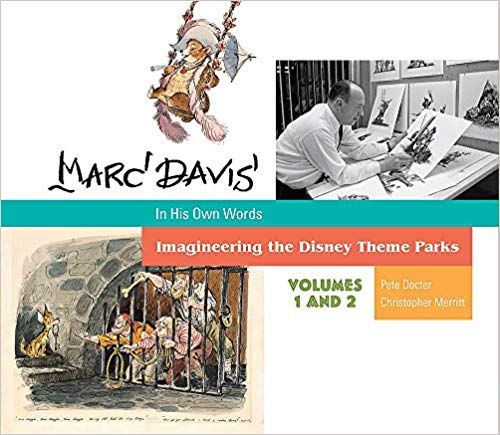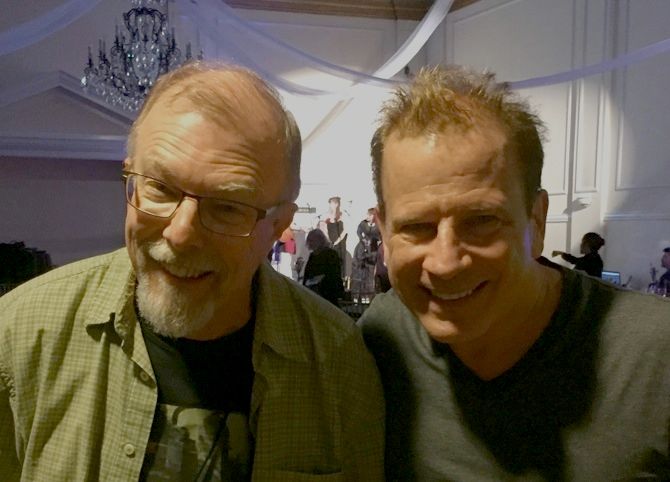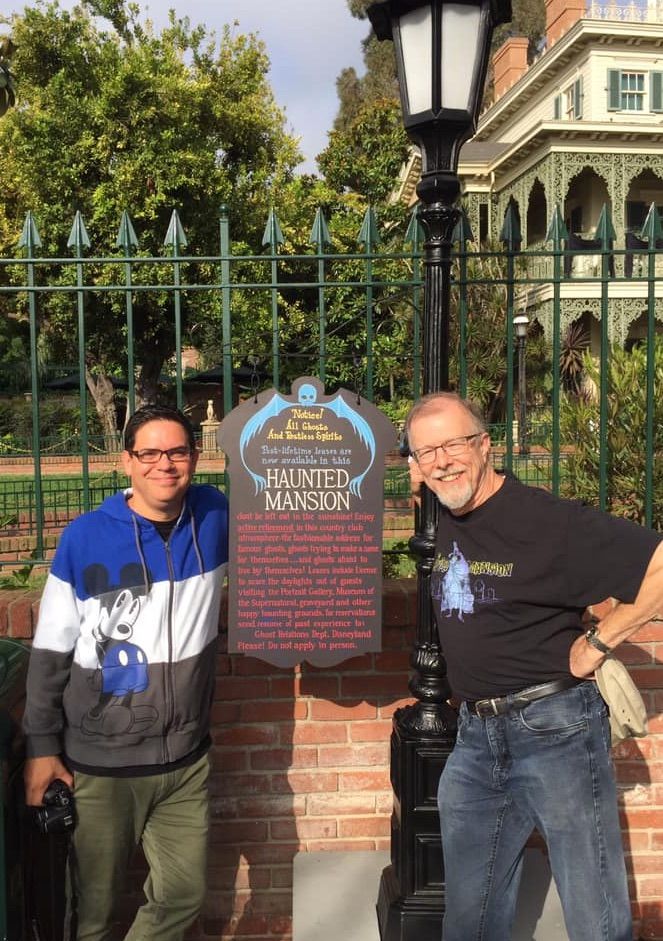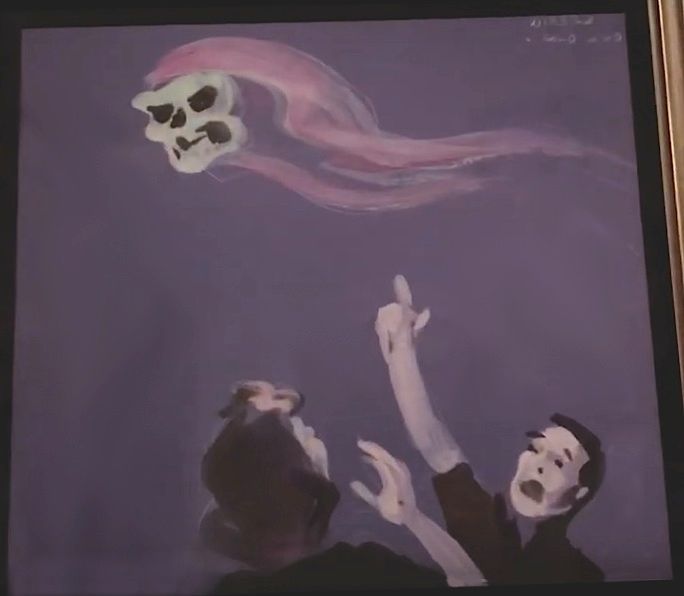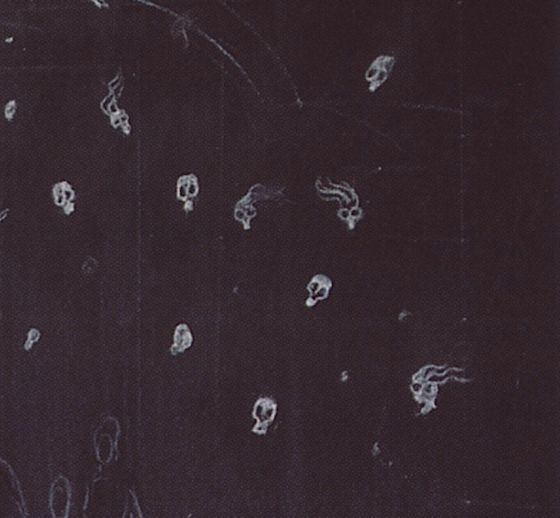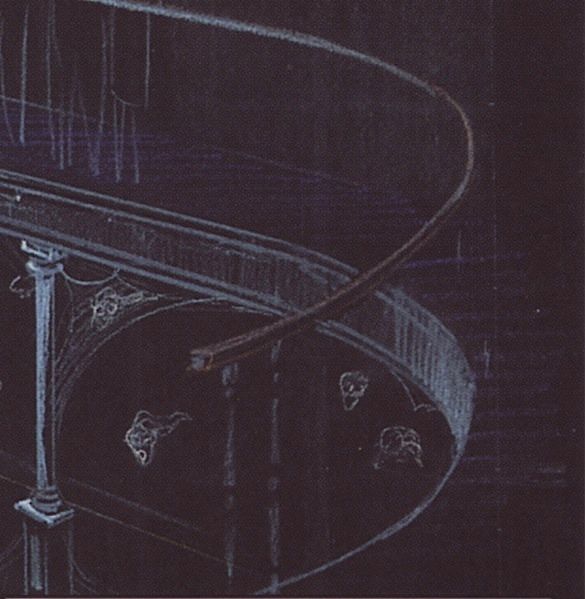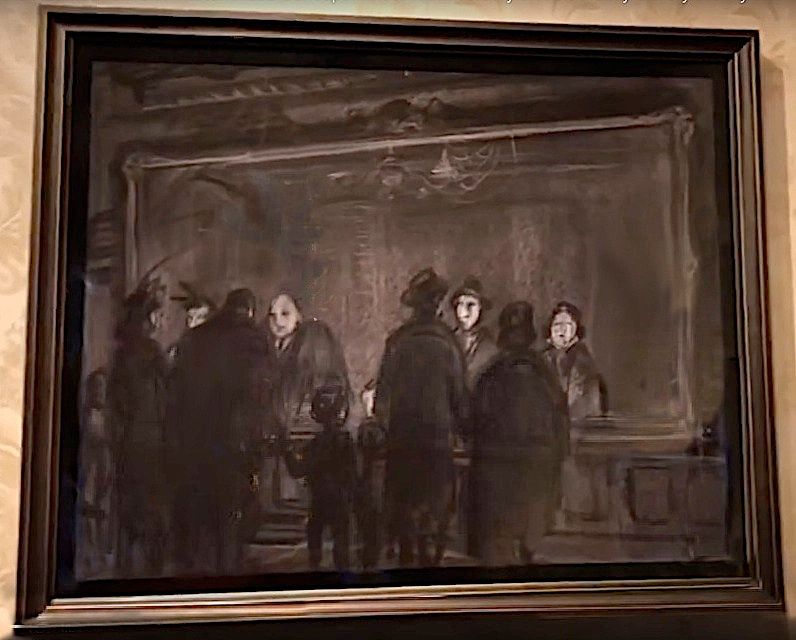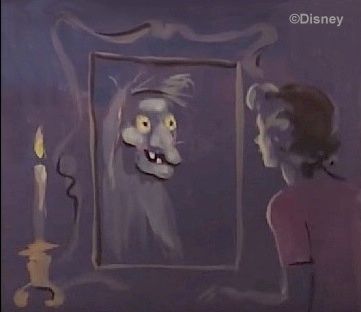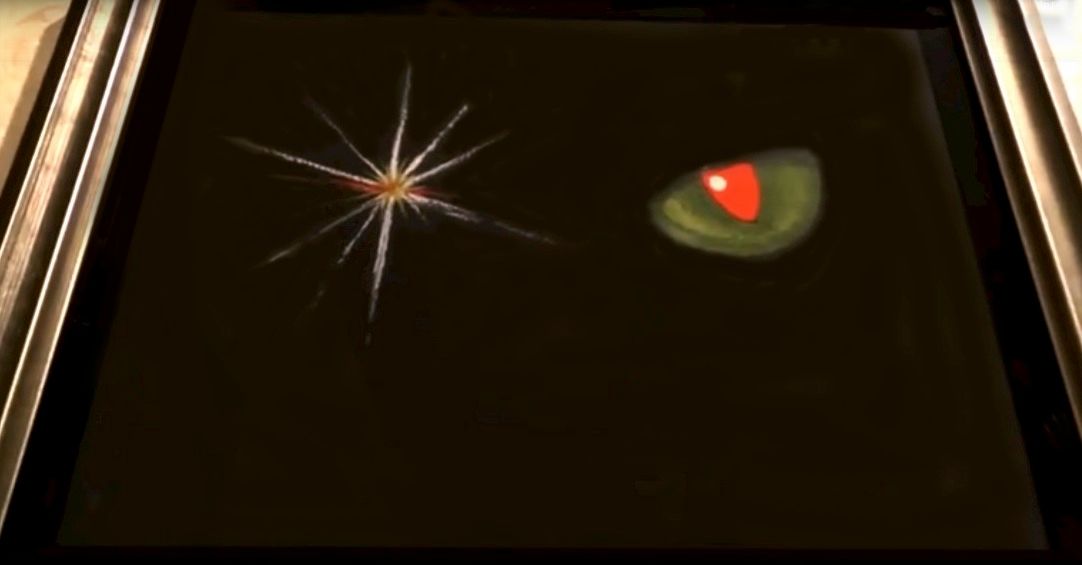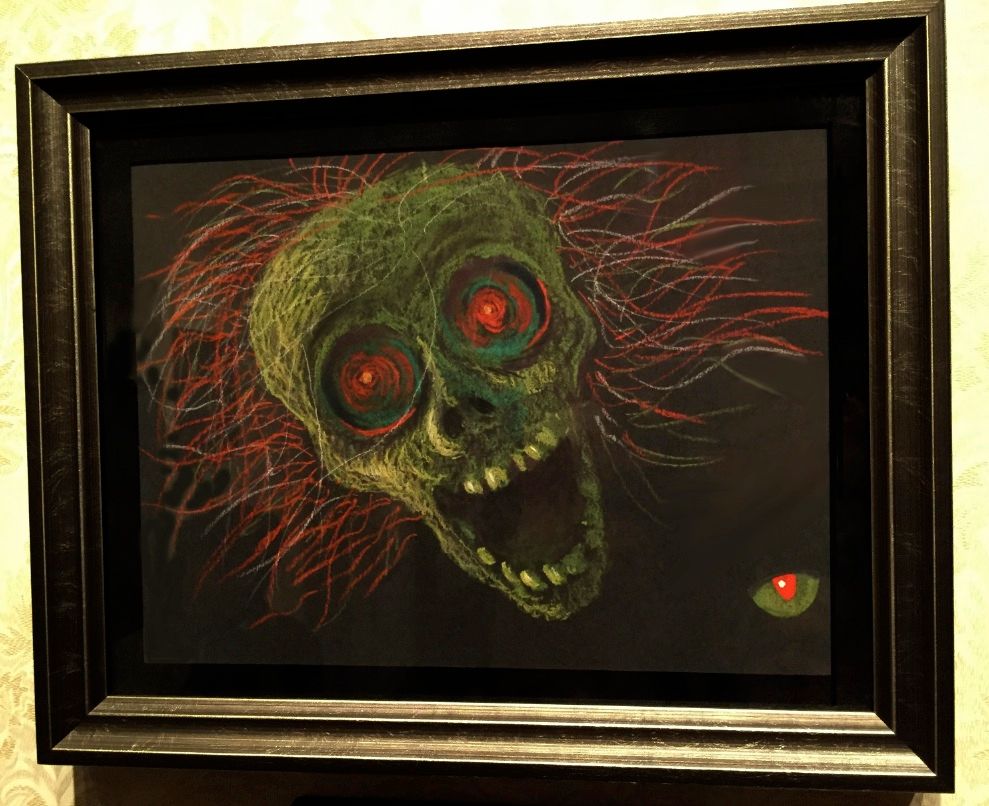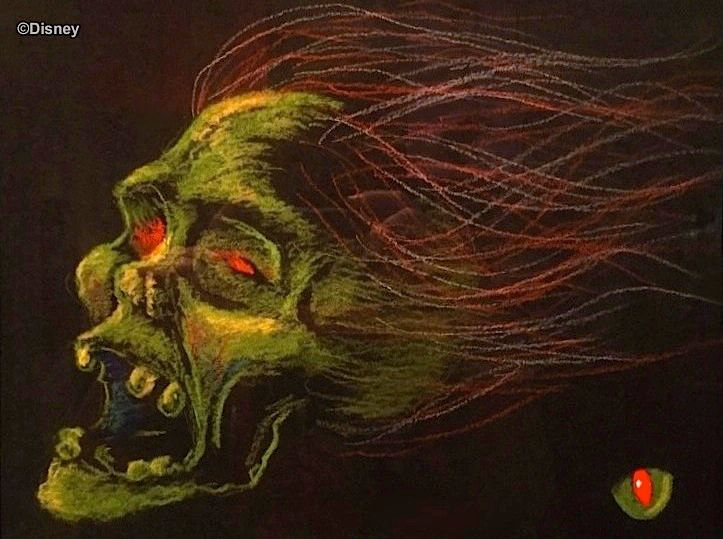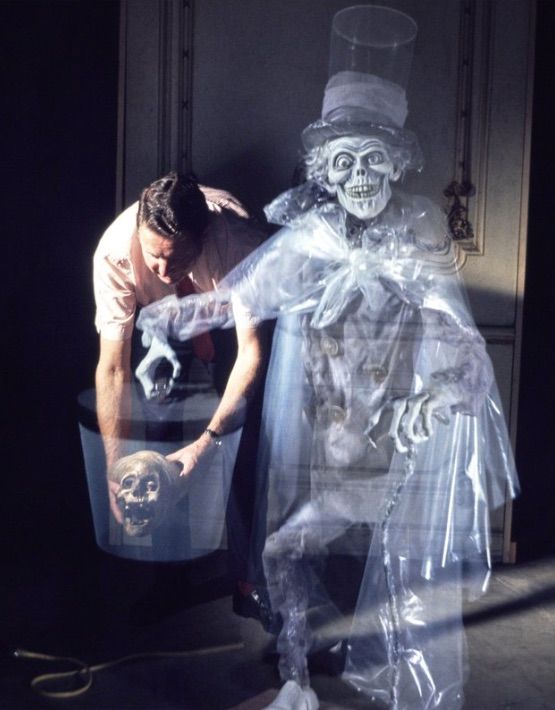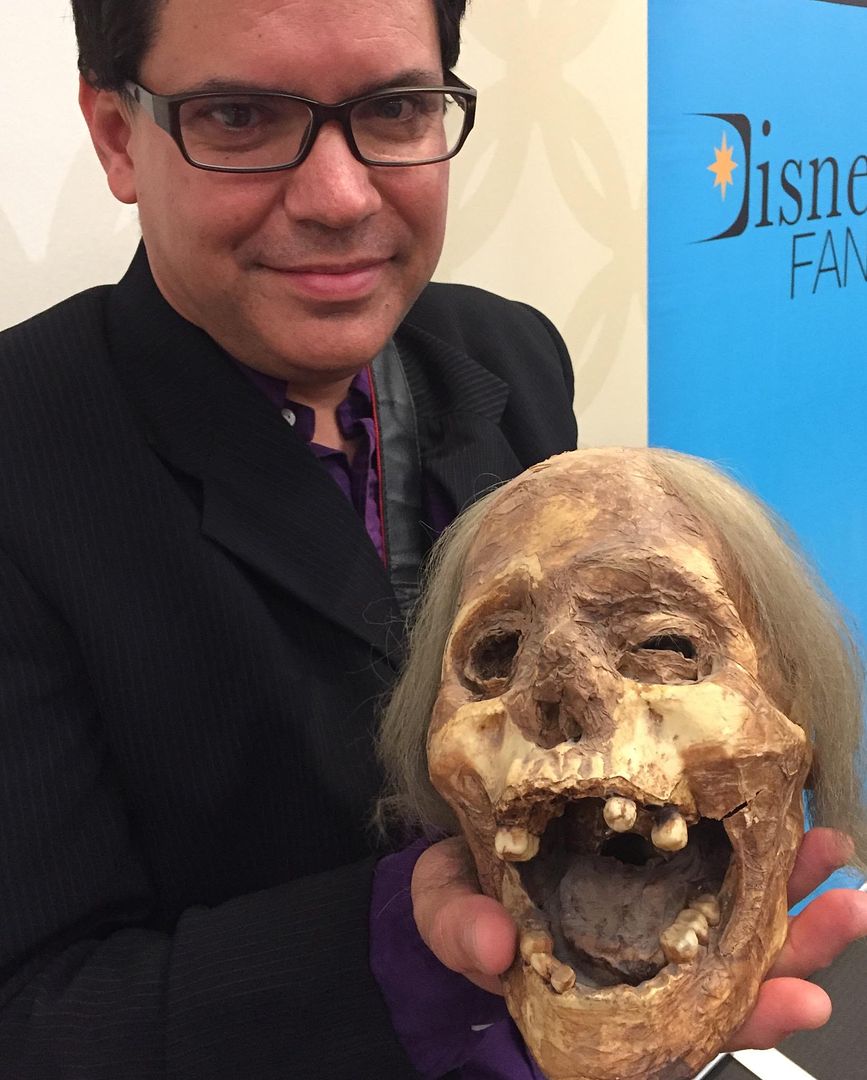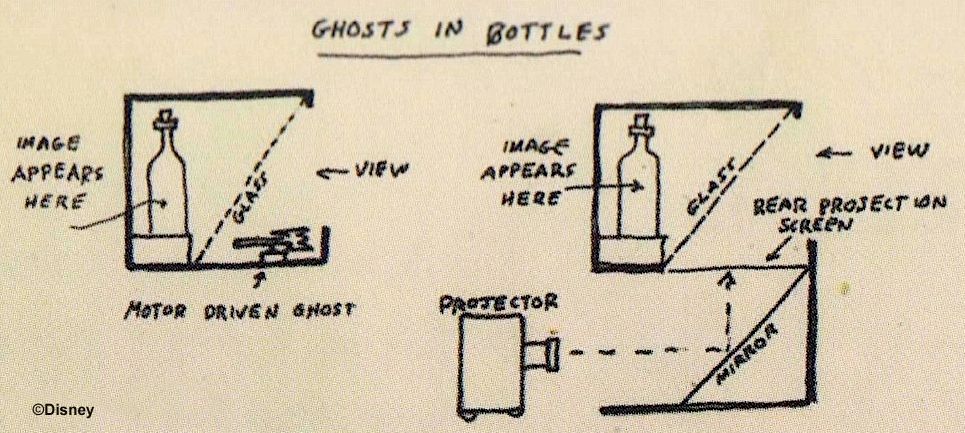Edit: November, 2020. I've been in communication with a source that potentially calls into question the whole premise of this post, or most of it. But first, go ahead and read the original blogging below, and then take note of the update that immediately follows it.
Kind of a downer post, folks. Sorry about that. But it's time for someone to turn a KNOW into a NO.
If you're any kind of Mansion history nerd, one thing you know (or think you know) is that special effects whiz Yale Gracey was heavily influenced by a book called The Boy Mechanic, which came out in 1913 and gave him all kinds of neat-o mosquito, tough torpedo ideas he would later use to cook up illusions for the Haunted Mansion.
I'm sorry to report that Rolly Crump is the man chiefly responsible for promoting the Boy Mechanic myth. It was he who first pointed out the Pepper's Ghost chapter, implying that this is where Yale got the idea for this most convincing of all Haunted Mansion illusions.
I don't doubt Rolly's sincerity, but the simple fact is that there is virtually nothing in the book that looks to me like it might have served as inspiration for anything in the Mansion. Yes, I've read it. Nothing there. It's a compendium of projects contributed by a host of readers of Popular Mechanics magazine, with all sorts of "how to make this" and "how to do that" instruction, some of it extremely rudimentary and some of it remarkably sophisticated. It is true that there are lots of magic tricks in it, but they are mostly the kind of things you found in that first ever "magic set" you got as a kid. Coin, card, and handkerchief tricks. Think of the beloved Magic From the Haunted Mansion 1970 souvenir booklet. That level. Oddly enough, however, and at the other extreme, The Boy Mechanic also includes explanations of how some very professional stage tricks are done, and these go well beyond the scope of DYI at home even by adults, let alone boys. There's the levitating lady with hoops passed over her, and very sophisticated black boxes that require trained assistants and special lighting. You wonder why they're in there, except as spoilers. Nevertheless, I didn't find anything even among those that I could connect with something in the Mansion. (By the way, the books have thorough indices, making it easy to find all the "tricks," "magic," and "illusions.")
And then there's the fact that the original '57 Sleeping Beauty walk-thru was absolutely loaded with extremely sophisticated examples of Pepper's Ghost, thanks to Anderson. Perhaps the best way to appreciate this is to get ahold of the Sleeping Beauty 50th Anniversary Platinum Edition DVD. In the Special Features is a fascinating history of the original walk-thru attraction (hosted by Tony Baxter and Chris Merritt). Everyone talks about what a special effects genius Yale Gracey was, but I'm telling ya, our boy Ken was not far behind.
And now for the update. My source is a former WDI Imagineer who once worked with a couple of WDI guys who worked with Yale in earlier years. One of them was in fact Yale's assistant not long before Yale's retirement and took over the department as it moved into the EPCOT years. Anyway, according to my source, both of those guys told him that Yale worked on the Sleeping Beauty walk-thru, heavily implying that the sophisticated Peppers Ghost effects (and other effects) in the diorama were in fact the work of Yale Gracey, not Ken Anderson. The problem is that there is currently no hard evidence for his involvement, like his name on a project document. But as second-hand hearsay goes, this is much more solid evidence than usual, and it comes from excellent sources. If it's true, then we can imagine a scenario in which Yale first learned about Peppers from those famous pages in the original Boy Mechanic volume and was directly responsible for introducing that effect at WED, to Ken, Rolly, and others. It's still true that there is nothing else in the books that looks remotely like anything seen in the Mansion or elsewhere, so that part of the myth is indeed mythical, but the notion that it was the original source for the Peppers Ghost effect could well be true after all.
If you're any kind of Mansion history nerd, one thing you know (or think you know) is that special effects whiz Yale Gracey was heavily influenced by a book called The Boy Mechanic, which came out in 1913 and gave him all kinds of neat-o mosquito, tough torpedo ideas he would later use to cook up illusions for the Haunted Mansion.
The example everyone points to is the "Pepper's Ghost" illusion on pages 52-53:
I'm sorry to report that Rolly Crump is the man chiefly responsible for promoting the Boy Mechanic myth. It was he who first pointed out the Pepper's Ghost chapter, implying that this is where Yale got the idea for this most convincing of all Haunted Mansion illusions.
I don't doubt Rolly's sincerity, but the simple fact is that there is virtually nothing in the book that looks to me like it might have served as inspiration for anything in the Mansion. Yes, I've read it. Nothing there. It's a compendium of projects contributed by a host of readers of Popular Mechanics magazine, with all sorts of "how to make this" and "how to do that" instruction, some of it extremely rudimentary and some of it remarkably sophisticated. It is true that there are lots of magic tricks in it, but they are mostly the kind of things you found in that first ever "magic set" you got as a kid. Coin, card, and handkerchief tricks. Think of the beloved Magic From the Haunted Mansion 1970 souvenir booklet. That level. Oddly enough, however, and at the other extreme, The Boy Mechanic also includes explanations of how some very professional stage tricks are done, and these go well beyond the scope of DYI at home even by adults, let alone boys. There's the levitating lady with hoops passed over her, and very sophisticated black boxes that require trained assistants and special lighting. You wonder why they're in there, except as spoilers. Nevertheless, I didn't find anything even among those that I could connect with something in the Mansion. (By the way, the books have thorough indices, making it easy to find all the "tricks," "magic," and "illusions.")
Did I say "books"? Yep, there are actually four volumes in the series, not just the one.
But what about that Pepper's Ghost chapter? Well, we've covered this ground before (HERE, and HERE), but to recap, Ken Anderson's plans for the Disneyland Haunted House featured several applications of Pepper's Ghost. You will remember that those plans date from 1957-58, and Yale's involvement in the project began in 1959, so it's not as if Ken's plans were lost in a file somewhere and forgotten over time.
But there's even more Pepper there than we knew. We've seen this Anderson sketch before:
What we didn't know until it was published recently is that Anderson did a second sketch of this scene,
this time included a diagram of how the illusion would be achieved, using classic Pepper's Ghost:
this time included a diagram of how the illusion would be achieved, using classic Pepper's Ghost:
MDIHOW 337
Ken's diagram is crystal clear and reminds me of 19th century specimens:
Turning to Yale, more complete and better quality copies of pages from Yale's notebooks have also been published recently, in
MDIHOW (421) and at Doombuggies . com. They provide good examples of how Yale would have used Pepper in the attraction:
Looks to me a heck of a lot more like Ken Anderson than Boy Mechanic.
And then there's the fact that the original '57 Sleeping Beauty walk-thru was absolutely loaded with extremely sophisticated examples of Pepper's Ghost, thanks to Anderson. Perhaps the best way to appreciate this is to get ahold of the Sleeping Beauty 50th Anniversary Platinum Edition DVD. In the Special Features is a fascinating history of the original walk-thru attraction (hosted by Tony Baxter and Chris Merritt). Everyone talks about what a special effects genius Yale Gracey was, but I'm telling ya, our boy Ken was not far behind.
It's perfectly possible that Ken's work stirred memories in Yale of seeing such an illusion in an old book he had
read as a kid, and perhaps he made some remarks to Rolly about it, and the whole thing grew out of that. Whatevv.
*****************
And now for the update. My source is a former WDI Imagineer who once worked with a couple of WDI guys who worked with Yale in earlier years. One of them was in fact Yale's assistant not long before Yale's retirement and took over the department as it moved into the EPCOT years. Anyway, according to my source, both of those guys told him that Yale worked on the Sleeping Beauty walk-thru, heavily implying that the sophisticated Peppers Ghost effects (and other effects) in the diorama were in fact the work of Yale Gracey, not Ken Anderson. The problem is that there is currently no hard evidence for his involvement, like his name on a project document. But as second-hand hearsay goes, this is much more solid evidence than usual, and it comes from excellent sources. If it's true, then we can imagine a scenario in which Yale first learned about Peppers from those famous pages in the original Boy Mechanic volume and was directly responsible for introducing that effect at WED, to Ken, Rolly, and others. It's still true that there is nothing else in the books that looks remotely like anything seen in the Mansion or elsewhere, so that part of the myth is indeed mythical, but the notion that it was the original source for the Peppers Ghost effect could well be true after all.

